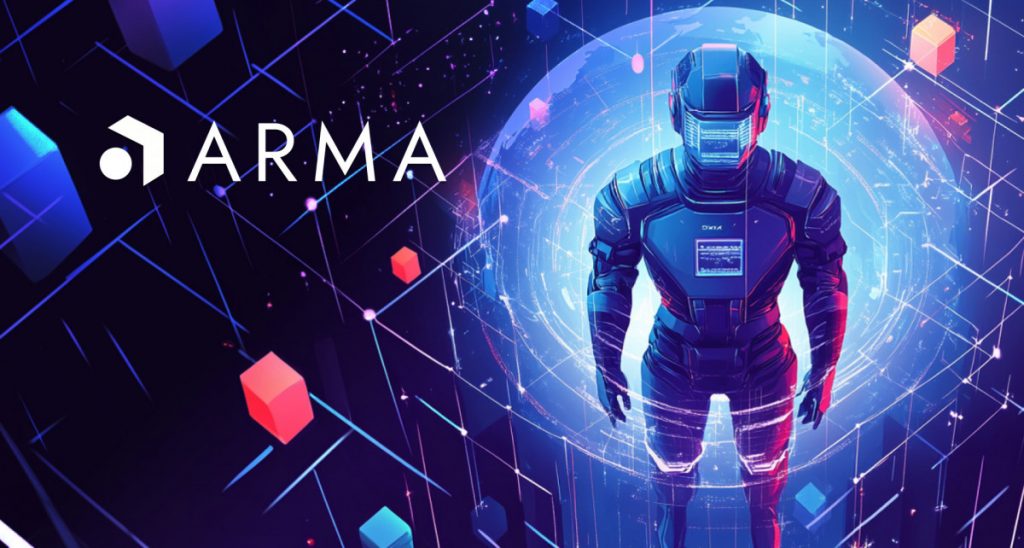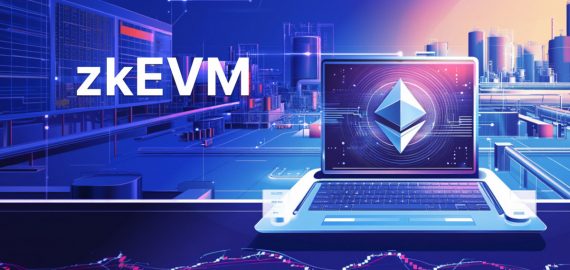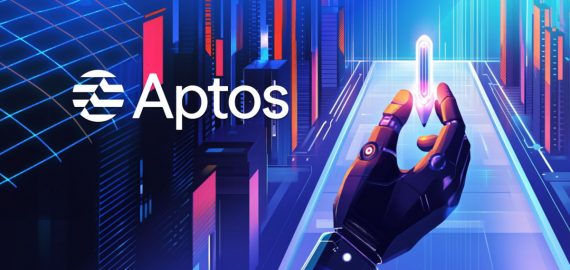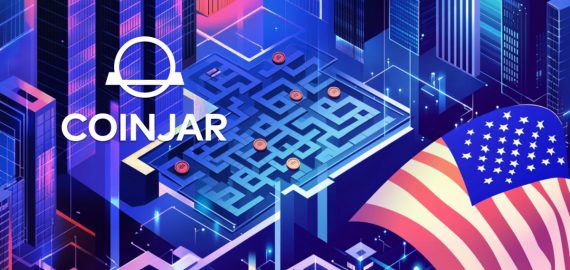DeFAI Must Solve The Cross-Chain Conundrum To Fulfil Its Potential


In Brief
As interest in AI-powered agents within DeFi continues to accelerate, Giza Protocol introduced ARMA, its own AI agent designed with cross-chain functionality in mind.

Blockchain is a highly competitive landscape, with dozens of Layer-1 networks playing host to growing ecosystems of decentralized finance applications.
The rich variety of DeFi dApps across the leading blockchain networks is extremely encouraging for adherents of this alternative form of finance, but there’s one major concern that must be overcome – interoperability between blockchains.
Currently, each blockchain lives on a separate “island”, and the dApps building on them remain isolated from those on other networks. But with so many L1s growing from strength-to-strength, it’s clear there will be no winner-takes-all. Instead, the future is destined to become a multi-chain world, which necessitates the creation of more efficient and secure cross-chain interoperability protocols to serve as connecting bridges to span these different islands.
These cross-chain “bridges”, as they’re known in blockchain circles, are technical solutions that aim to support interoperability between DeFi dApps living on different networks, so a user can send funds from a dApp on Ethereum to another based on Solana, for example. They can enable a vastly improved experience, with enhanced liquidity and more sophisticated investing strategies for DeFi users.
The challenge of cross-chain interoperability
Because each blockchain operates using a different consensus mechanism, they’re unable to directly validate the “state” of other decentralized networks or off-chain systems, making it impossible to send funds directly from one to another. This connectivity limitation is often referred to as the “oracle problem”, and explains why it’s impossible to send a token such as SOL to a user with a Bitcoin wallet.
To enable blockchain interoperability, a cross-chain bridge needs to be able to read and write data in multiple formats and interpret dozens of different consensus mechanisms at once. This is essential so they can verify key information, such as whether a transaction has been finalized on a specific network. They also need to develop ways to receive, validate, and execute cross-chain transactions, ensuring neither network is compromised.
Cross-chain protocols must support various capabilities, including the ability to relay messages to and from different networks, transfer assets between them, and support “programmable token transfers”, so a user can take a supplementary action on the target blockchain, such as depositing bridged funds into a staking smart contract, within a single, smooth transaction.
In addition, blockchain interoperability systems must also support data oracles in order to trigger automated actions based on events on other blockchains or off-chain systems. Some institutional clients may want the ability to program their compliance policies into cross-chain workflows or to engage in private cross-chain asset transfers.
How does DeFi benefit?
For DeFi users, the major benefit of cross-chain protocols is that they enable the seamless flow of liquidity between different trading platforms and dApps, making their interactions smoother. The fact that most L1s live on separate islands is a big impediment to liquidity, and it doesn’t just impact users but also developers, limiting their opportunities for expansion, growth, and broader integration with the DeFi ecosystem.
Cross-chain technologies aim to overcome these barriers, linking the various islands of DeFi applications and enabling more sophisticated financial strategies.
Examples of this include multi-chain yield farming, where investors can move in and out of positions across multiple networks, as opposed to only within one limited ecosystem. In this way, they can always deploy their assets where the returns are higher to maximize their yields.
Cross-chain protocols also help to consolidate liquidity across chains, creating a unified liquidity pool that dApps can tap into, improving capital efficiency, reducing slippage, and negating the need for centralized exchange platforms.
Investors can also use cross-chain bridges to engage in multi-chain lending, improving the efficiency of loan issuance and collateralization across the entire ecosystem of DeFi lending protocols, expanding their reach.
With DeFAI comes greater urgency
With the rise of so-called AI agents in DeFi, known as “DeFAI”, we’re on the verge of a new era of automation in areas such as yield farming. AI-powered agents are designed to execute trades and maximize yields on DeFi protocols, and the ability to do this across multiple blockchains can dramatically improve their effectiveness.
Already, some early AI agents understand this well. Giza Protocol, the creator of a DeFAI agent known as ARMA, has already built the foundations of cross-chain interoperability. ARMA is designed to analyze crypto asset markets 24/7 in order to carry out sophisticated yield-farming strategies for investors in a fully autonomous way.
With more than $1 million in user funds under management, Arma is focused on USDC stablecoin liquidity pools and constantly monitors a number of DeFi protocols across Base and Mode Network, which are two Ethereum-based Layer-2 networks. Ultimately, it wants to connect ARMA to the entire blockchain ecosystem to increase the opportunities for its users.
Giza has recognized that secure, reliable, and high-speed blockchain bridge solutions are non-negotiable for the future of AI agents. If its agents can only work within the confines of a single blockchain ecosystem, this will seriously hamper their ability to deliver maximum returns for its users.
It can be argued that DeFAI is designed for the cross-chain world. As more DeFi protocols emerge on more blockchains, the cognitive demands placed on DeFi users become exponentially harder. Those users have to monitor multiple protocols, asset prices, interest rates, gas costs, and other strategy variables around the clock, and the demands become much more acute when they’re working across multiple blockchains.
There’s simply no way for humans to take every single variable into consideration, and especially not 24/7, but this deficiency is what leads to suboptimal decisions and missed opportunities, increasing risk for users. That’s where AI agents can make the biggest difference.
Cross-chain is the top priority for DeFAI
Traditionally, cross-chain bridges have been a major target for cybercriminals. Their history is littered with tales of security breaches that have cost crypto users millions of dollars in losses. Beyond the security risks, today’s bridges are still very inefficient, with high fees, runaway slippage, and delayed transaction times. These challenges must all be solved, because AI agents can only do what they do using real-time data to make split-second decisions and capitalize on razer-thin price differentials. Any disruption will kneecap the advantages they provide.
For AI agents to realize their full potential, the DeFAI industry must develop more robust cross-chain interoperability protocols. They need increased resilience against attacks combined with more efficient, lower-cost transactions.
With more optimal cross-chain capabilities, AI agents will excel in multi-chain arbitrage strategies by looking for and taking advantage of asset price differences across networks. They can improve yields by immediately shifting funds in real-time to the network and protocol where the returns are most advantageous, while factoring gas fees into their calculations. They will become vastly more profitable, emerging as the new standard for DeFi investing.
But without cross-chain, DeFAI will be confined to isolated ecosystems, severely limiting its potential. That’s why blockchain interoperability is no longer just an option. For DeFAI, it has to be the number one priority, and those that get it right first will be the ones that give investors the biggest edge.
Disclaimer
In line with the Trust Project guidelines, please note that the information provided on this page is not intended to be and should not be interpreted as legal, tax, investment, financial, or any other form of advice. It is important to only invest what you can afford to lose and to seek independent financial advice if you have any doubts. For further information, we suggest referring to the terms and conditions as well as the help and support pages provided by the issuer or advertiser. MetaversePost is committed to accurate, unbiased reporting, but market conditions are subject to change without notice.
About The Author
Alisa, a dedicated journalist at the MPost, specializes in cryptocurrency, zero-knowledge proofs, investments, and the expansive realm of Web3. With a keen eye for emerging trends and technologies, she delivers comprehensive coverage to inform and engage readers in the ever-evolving landscape of digital finance.
More articles

Alisa, a dedicated journalist at the MPost, specializes in cryptocurrency, zero-knowledge proofs, investments, and the expansive realm of Web3. With a keen eye for emerging trends and technologies, she delivers comprehensive coverage to inform and engage readers in the ever-evolving landscape of digital finance.


















































